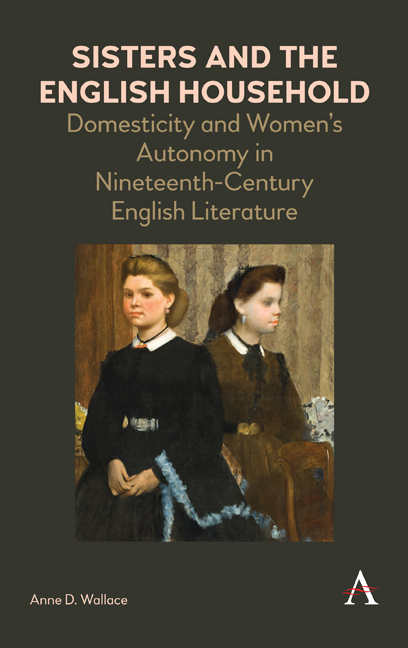 Sisters and the English Household
Sisters and the English Household Book contents
- Frontmatter
- Dedication
- Contents
- Acknowledgments
- Introduction
- 1 Alternative Domesticities: Revaluing the Sibling in the House
- 2 “Out into the Orchard”: The Departure of the Sibling in the House
- 3 The Problem of the Sister in the House
- 4 George Eliot's Natural History of the English Family
- Notes
- Works Cited
- Index
1 - Alternative Domesticities: Revaluing the Sibling in the House
Published online by Cambridge University Press: 29 May 2019
- Frontmatter
- Dedication
- Contents
- Acknowledgments
- Introduction
- 1 Alternative Domesticities: Revaluing the Sibling in the House
- 2 “Out into the Orchard”: The Departure of the Sibling in the House
- 3 The Problem of the Sister in the House
- 4 George Eliot's Natural History of the English Family
- Notes
- Works Cited
- Index
Summary
In October 1796, just ten days after Mary Lamb killed their mother in a violent episode of derangement, her brother Charles wrote to Samuel Taylor Coleridge about his family's troubles. Faced with the support of Mary, for whom he intended to care at home, and his remaining family on the slender means of his post at the East India Company, Charles wrote out the motto and dedication— to Mary— of his one book of poetry, and then renounced poetry in favor of more profitable journalistic writing:
I take leave of a passion which has reigned so royally (so long) within me; thus, with its trappings of laureatship, I fling it off, pleased and satisfied with myself that the weakness troubles me no longer. I am wedded, Coleridge, to the fortunes of my sister and my poor old father. (Letters I.64)
Charles's rhetorical equation of marriage and sibling love has claimed the full attention of scholarly readers, who stop short at the words “my sister”: the last words of Charles's phrase, “and my poor old father,” are not quoted in critical accounts of Charles and Mary's relationship. Even Jane Aaron, whose thoughtful examination of gender in the Lambs’ writings places them in important historical contexts, quotes only that troublesome verb “wedded” at the beginning of her study, implicitly (and unintentionally) attributing it to Mary: “ ‘wedded’ in an intense sibling bond, they lived together, wrote together, ‘writing on one table,’ according to Mary, ‘like an old literary Darby and Joan,’ and were rarely seen apart” (1–2). Aaron even more pointedly excludes the passage's final words in her concluding chapter: “Charles made the crucial decision to ‘wed’ himself, in his own phrase, ‘to the fortunes of my sister’ ” (170).
Charles certainly did figure the sibling bond as marriage, not only here but also in his 1797 poem “I am a widowed thing, now thou art gone.” His recasting of his sister Mary as “cousin Bridget” in his “Elia” essays implies a similar figuration, since cousins were not forbidden to marry by canon or civil law, and were not infrequently seen as quite appropriate marriage choices.
- Type
- Chapter
- Information
- Sisters and the English HouseholdDomesticity and Women's Autonomy in Nineteenth-Century English Literature, pp. 19 - 54Publisher: Anthem PressPrint publication year: 2018


